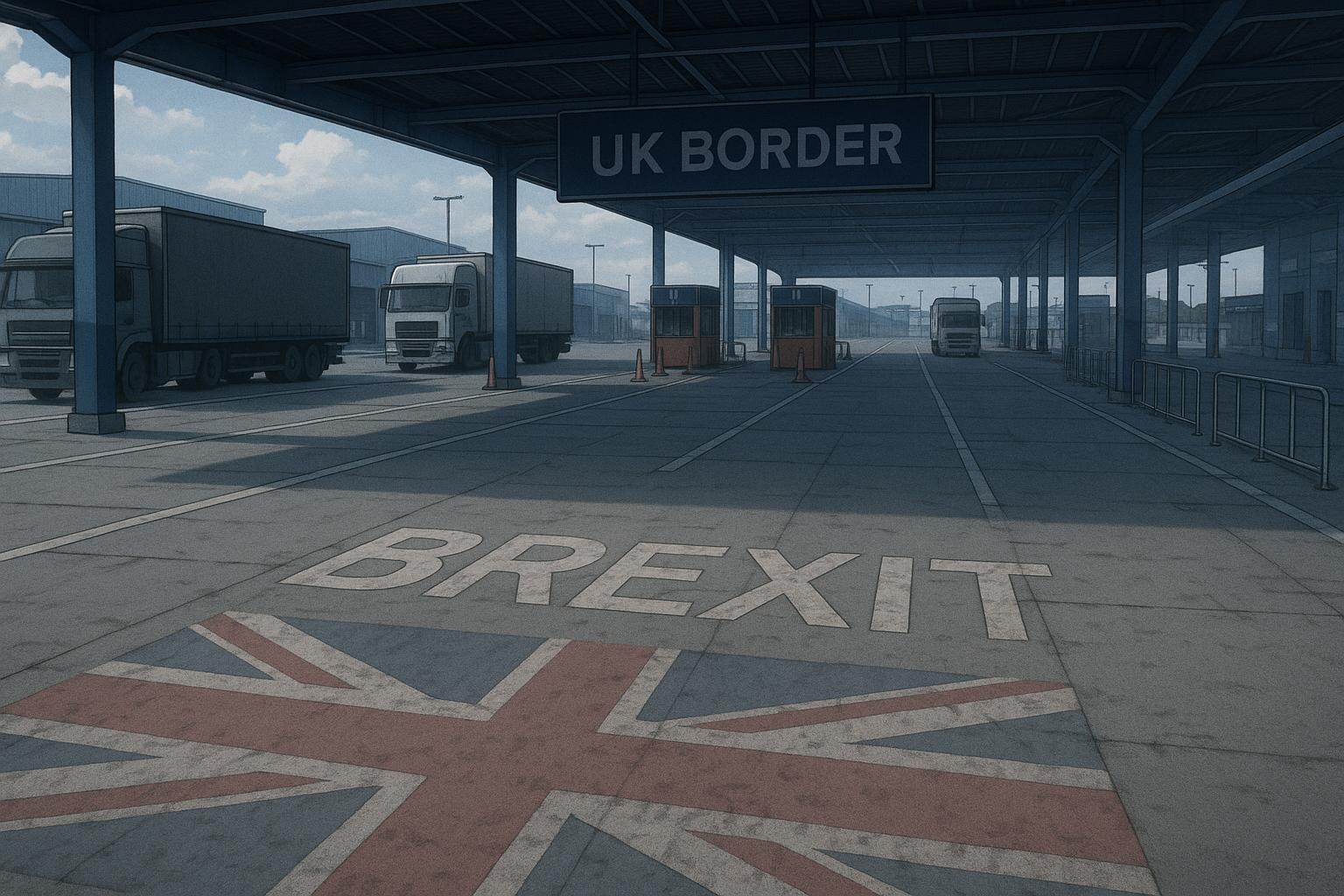Ministers are navigating a complex landscape as they attempt to offload the Sevington Border Control Point (BCP) in Kent, a substantial facility originally constructed to handle the influx of lorries anticipated during a potential no-deal Brexit. Following a new trade agreement between the UK and the EU, the need for such an extensive facility is now in question, with expectations that border checks will be significantly reduced by 2026.
The Sevington facility, designed to process up to 1,300 trucks, was built in 2021 at a cost of £23 million to manage checks on plant and animal imports, particularly dairy and meat products. However, it has not been able to generate sufficient revenue, bringing in only £12.58 million in the year leading up to April 2025, according to figures released by the Department of Environment, Food and Rural Affairs. This shortfall poses financial challenges for the government, which is already reportedly in talks with Eurotunnel and the Port of Dover about the future of the site — discussions that insiders suggest are still in their infancy.
The decision to reduce border checks aligns with statements from port executives, who express relief over the new agreements aimed at easing supply chains between Britain and the continent. Doug Bannister, chief executive of Dover Port, noted that this development should help alleviate logistical challenges faced by businesses operating across the English Channel. However, he acknowledged the complexity involved in the practical implementation of the new rules and emphasised the need for ongoing dialogue with government officials regarding the future of Sevington.
The implications of this trade reset extend to the broader spectrum of British ports, where significant investments in BCPs have led to calls for compensation. The British Ports Association reported that the industry collectively invested £120 million in 41 BCPs mandated by the previous Conservative government in an effort to facilitate post-Brexit trade. Now, many of these facilities, having remained largely unused during the transition period due to delays and technical failures, face redundancy. Portsmouth International Port, for example, has incurred losses amounting to £7.8 million on its own BCP, which is now considered a financial burden rather than a valuable asset.
Concerns surrounding biosecurity have also surfaced in relation to the Sevington facility. The Dover Port Health Authority has voiced apprehension about the infrastructure's capacity to handle all food imports, warning that inadequate facilities might allow pathogens into the UK, jeopardising public health. Lucy Manzano, the DPHA's head, articulated fears that the decision to centralise inspections at Sevington could lead to food safety issues, potentially allowing contaminated goods to enter the domestic market.
Though the government maintains that it is committed to negotiating an agreement with the EU aimed at minimising unnecessary border checks, this situation prompts reflection on the broader consequences of Brexit. The British Ports Association has reiterated its position, arguing that port operators, having acted on government directives, deserve reasonable compensation for their investments in border facilities that are rapidly becoming obsolete.
Efforts to mitigate the financial ramifications for ports are underway, with the Cabinet Office indicating a willingness to collaborate with port authorities to streamline any transitions necessitated by the new trade arrangements. Yet, as the clock ticks down to the anticipated regulatory changes, the reality remains that these once-essential facilities may soon stand as testimonies to the swift and often tumultuous changes of recent years.
Reference Map:
- Paragraphs 1, 3, 4, 7
- Paragraphs 2, 5, 6
- Paragraphs 5, 7
- Paragraphs 4, 6
- Paragraphs 5, 6
- Paragraphs 5, 6
- Paragraphs 4, 6
Source: Noah Wire Services
